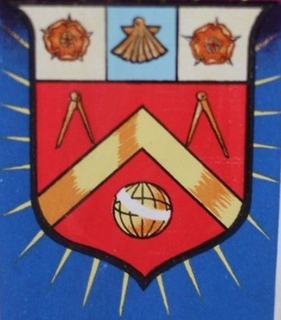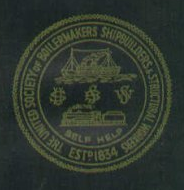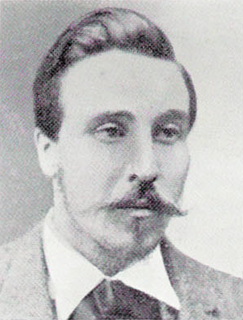The General Union of Carpenters and Joiners (GUC&J) was a trade union in the United Kingdom.
A trade union, also called a labour union or labor union (US), is an association of workers in a particular trade, industry, or company created for the purpose of securing improvement in pay, benefits, working conditions or social and political status through collective bargaining and working conditions through the increased bargaining power wielded by creation of a monopoly of the workers. The trade union, through its leadership, bargains with the employer on behalf of union members and negotiates labour contracts with employers. The most common purpose of these associations or unions is "maintaining or improving the conditions of their employment". This may include the negotiation of wages, work rules, complaint procedures, rules governing hiring, firing and promotion of workers, benefits, workplace safety and policies.

The United Kingdom (UK), officially the United Kingdom of Great Britain and Northern Ireland, informally as Britain, is a sovereign country lying off the north-western coast of the European mainland. The United Kingdom includes the island of Great Britain, the north-eastern part of the island of Ireland and many smaller islands. Northern Ireland is the only part of the United Kingdom that shares a land border with another sovereign state, the Republic of Ireland. Apart from this land border, the United Kingdom is surrounded by the Atlantic Ocean, with the North Sea to the east, the English Channel to the south and the Celtic Sea to the south-west, giving it the 12th-longest coastline in the world. The Irish Sea lies between Great Britain and Ireland. With an area of 242,500 square kilometres (93,600 sq mi), the United Kingdom is the 78th-largest sovereign state in the world. It is also the 22nd-most populous country, with an estimated 66.0 million inhabitants in 2017.
Contents
The union was founded in 1827 by the amalgamation of various local societies in London. Originally named the Friendly Society of Operative House Carpenters and Joiners of Great Britain and Ireland, in 1863 it was renamed as the Friendly Operative Carpenters and Joiners General Union of Great Britain, and was thereafter universally known as the "General Union of Carpenters and Joiners". [1]

London is the capital and largest city of both England and the United Kingdom. Standing on the River Thames in the south-east of England, at the head of its 50-mile (80 km) estuary leading to the North Sea, London has been a major settlement for two millennia. Londinium was founded by the Romans. The City of London, London's ancient core − an area of just 1.12 square miles (2.9 km2) and colloquially known as the Square Mile − retains boundaries that follow closely its medieval limits. The City of Westminster is also an Inner London borough holding city status. Greater London is governed by the Mayor of London and the London Assembly.
The union's influence variedly greatly over its existence. In 1832, it had only 938 members, but this grew to 6,774 only two years later. It then affiliated to the Operative Builders' Union, while remaining independent; it only just survived the collapse of the Operative Builders, and had a mere 536 members in 1850. [1]
The Operative Builders' Union was an early trade union federation representing construction and maintenance workers in the United Kingdom.
In 1861, the union's general secretary, Thomas Skinner, was imprisoned. In the aftermath, several branches joined the new Amalgamated Society of Carpenters and Joiners (ASC&J). Although membership of the General Union recovered, a 53-week strike by the Manchester branch in 1877 drained funds and led many more members to defect to the ASC&J. By 1883, it had 1,750 members, less than a tenth the membership of the ASC&J. That year, William Matkin was elected as general secretary, and rapidly increased membership, which reached 9,000 in 1900. However, many of the new members paid a very low rate of subscriptions and as a result were not eligible for most of the membership benefits. [1]
The Amalgamated Society of Carpenters and Joiners (ASC&J) was a New Model Trade Union in the 1860s in the United Kingdom, representing carpenters and joiners.

Manchester is a city and metropolitan borough in Greater Manchester, England, with a population of 545,500 as of 2017. It lies within the United Kingdom's second-most populous built-up area, with a population of 3.2 million. It is fringed by the Cheshire Plain to the south, the Pennines to the north and east, and an arc of towns with which it forms a continuous conurbation. The local authority is Manchester City Council.

William Matkin (1845–1920) was a British trade unionist.
During the 1900s and 1910s, the ASC&J repeatedly proposed a merger with the GUC&J, but was rebuffed. However, Matkin died in 1920, and the union agreed to a merger the following year, which formed the Amalgamated Society of Woodworkers. [1]

The Amalgamated Society of Woodworkers (ASW) was a British trades union representing carpenters, joiners and allied trades. The ASW was formed in 1921 by the amalgamation of two smaller unions. It was itself merged into the Union of Construction, Allied Trades and Technicians in 1971.






